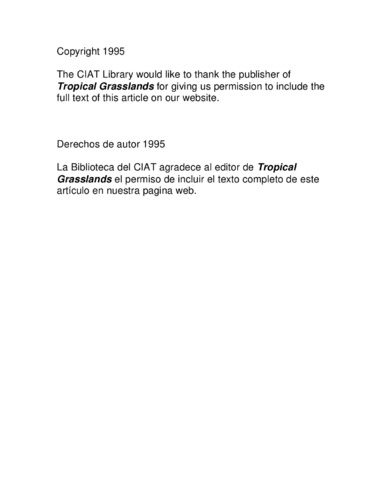Sources of resistance in species of Brachiaria to foliar blight disease caused by Rhizoctonia solani
This study developed a fast and reliable method of inoculating Brachiaria, a genus of tropical forage grasses, with Rhizoctonia solani, the causal agent of foliar blight disease. Using this method, 42 Brachiaria accessions were inoculated in both field and glasshouse, and their reactions to R. solani evaluated. Severity of infection in the glasshouse was rated by percentage of infected leaves, percentage of leaf area infected and number of sclerotia on infected tissue, and in the field by visual estimation. Disease scores were generally higher in the glasshouse than in the field. Sclerotia numbers on infected plant tissue correlated positively with percentage of infected leaves (r = 0.67), and with percentage of leaf area infected (r = 0.72). These percentages also correlated positively with each other (r = 0.77). Three accessions of B. humidicola (CIAT 16868, 16886 and 6369) and the B. dictyoneura accession CIAT 6133. (cv. Llanero) had consistently moderate levels of resistance. Four other accessions of B. humidicola (CIAT 679, 16876, 16887 and 16888) and the B. brizantha accession CIAT 16320 had moderatelow levels of resistance. All other accessions of B. brizantha were susceptible.

